How to Prevent Moisture and Water Damage in Your Basement Remodel
Topic:
Basement Remodel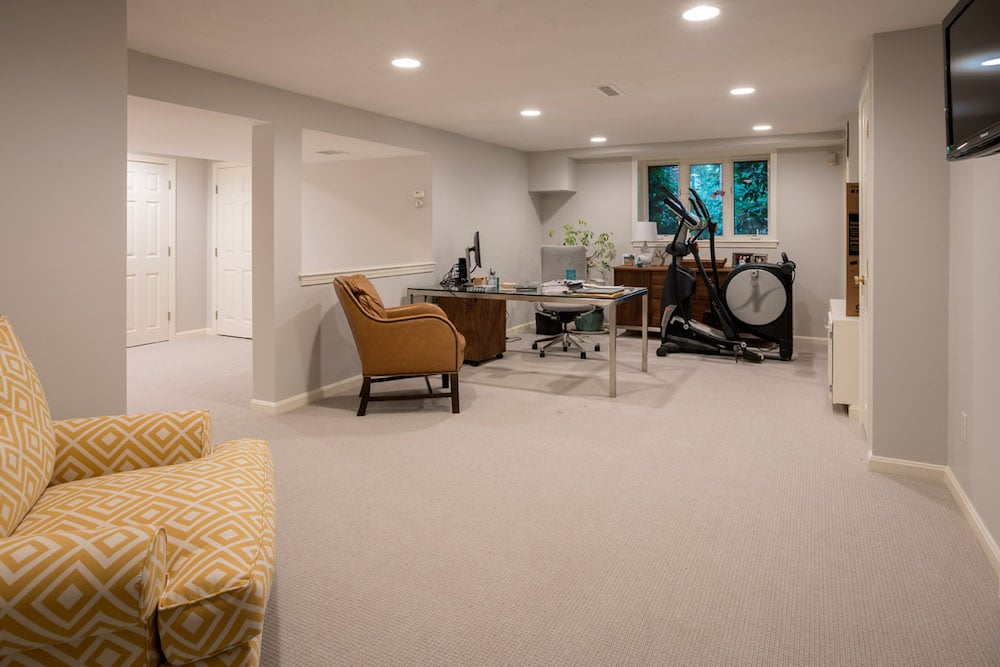
Your basement's square footage is just sitting there, ready to be transformed into entertainment space, a gym, a home office, and all the other things there isn't enough room for upstairs. But it isn't exactly a warm and inviting environment down there. It is damp, and there may even be signs of water damage. Is it even possible to turn this basement into a livable space?
By understanding the causes and working with a professional with experience addressing moisture and water damage in your basement, you can solve these problems and create a space that everyone will enjoy.
Assessing the Condition of Your Basement
There's a musty and moldy smell and a feel – clammy and damp – when you are in a water-damaged basement. Even if you can't see the results of moisture penetration right away, you know it is there.
What is causing moisture in your basement? There are many potential sources of moisture, including water moving through porous materials in the floor and walls, water vapor finding its way inside, or cooler, moist air settling in the space as warmer air rises.
The musty, moldy smell could be caused by off-gassing—the release of gases, chemicals, and volatile organic compounds (VOCs) into the air—and lack of air exchange. All those gases, chemicals, and VOCs are trapped down there when a basement does not have proper air circulation.
Running a dehumidifier is helpful, but there are still steps you need to take to ensure the renovated space will be comfortable and healthy and will withstand the test of time.

Addressing Water, Humidity, and Odor Issues
These problems get worse the longer you let them go. What are the most common moisture issues, and how can they be resolved for a quality basement renovation? Let's take a look.
Water Infiltration
Where there is moisture, there is likely to be water infiltration. Seeing actual puddles or damp spots is one thing. Evidence of water infiltration is also seen in efflorescence. This is efflorescence when you observe a white, powdery substance on concrete walls and floors. It is a sign of moisture coming through the concrete.
Install sump pumps and perimeter drains to address current and potential water infiltration. Perimeter drains will lead excess water to the sump pump, where it is removed from the basement. A sealed sump pump pit is a good idea so moisture vapor from the pit does not recirculate in the basement.
Issues with the Home Exterior
Most moisture problems start on the exterior. Moving water away from the home is crucial. Above ground and outside, grading and gutters are your first line of defense in ensuring stormwater does not enter the basement. Grade soil so water runs away from the home. Most homeowners have these things at the top of their minds when looking for ways to prevent moisture in the basement.
In the northeastern US, you must consider what happens during freezing temperatures. All that water could come in the fall when it freezes, and then you get another rainstorm that traps water next to the foundation. It becomes a real problem when that water thaws and you have not properly moved it away from the home.
Good grading and stormwater management help the basement and the property outside the home.
Increasing Air Quality
Once you have eliminated moisture and water infiltration problems, consider how air moves or does not move in the basement. Air exchange is crucial to keeping moisture vapor from remaining there.
There are different ways to do this, and building codes require a certain amount of air exchange in the basement. Air exchange can occur with windows or doors. Massachusetts code requires air exchange by natural or mechanical means in habitable space.
Here in the northeast, ERV—Energy Recovery Ventilator–systems are often used for air exchange. If you have a forced air system in the home, you can install an ERV to work with the HVAC system to introduce fresh air into the basement. If there is not a forced air system, you can still use an ERV with a Mini-Split air system. What is nice about them is that you can set the unit to dehumidify the air and pump the moisture outside.
Preventing Moisture Through Perimeter Walls
If exterior water is not managed correctly, hydrostatic pressure on the outside will permeate through the walls. To mitigate the porous nature of the exterior walls, they will need insulation. One way is to apply rigid wall insulation and frame over that. This helps to reduce the moisture exchange. An added benefit is that the R-value increases. Use a sealant like Drylok on walls and basement floors. Still, sealant should be used with other solutions, like rigid insulation.
In a basement, you are better off using green board instead of standard drywall because it is more resistant to moisture and is less likely to break down.
Installing the Right Flooring System
There are many options for flooring in a basement. For aesthetics and moisture resistance, LVT (luxury vinyl tiles) is hard to beat. There are so many styles to choose from, and it is one of the best floor finishes for durability and moisture resistance.
If you prefer wood flooring, look for engineered wood. Some homeowners want carpeting. Moisture-resistant padding should be used under a carpet in a basement. Tile floors are water resistant but also very cold to walk on. For any flooring, your renovation partner should prepare the concrete floor with Drylok and a vapor barrier.

A Dry Basement Makes All the Difference
In any remodeling project, a lot of work needs to happen before a nail even goes into a 2x4. This is especially true in a basement renovation, where past moisture and water damage need to be remediated, and the potential for new water damage must be stopped before it starts. Working with a skilled and trusted design-build firm with decades of experience in basement remodeling will ensure long-lasting enjoyment of beautiful new living spaces.
To learn more about the basement remodeling process, please read our eBook, “The Expert Guide to Luxury Basement Remodeling for Discerning Homeowners” And if you are ready to speak about your project, please schedule a home renovation discovery session.


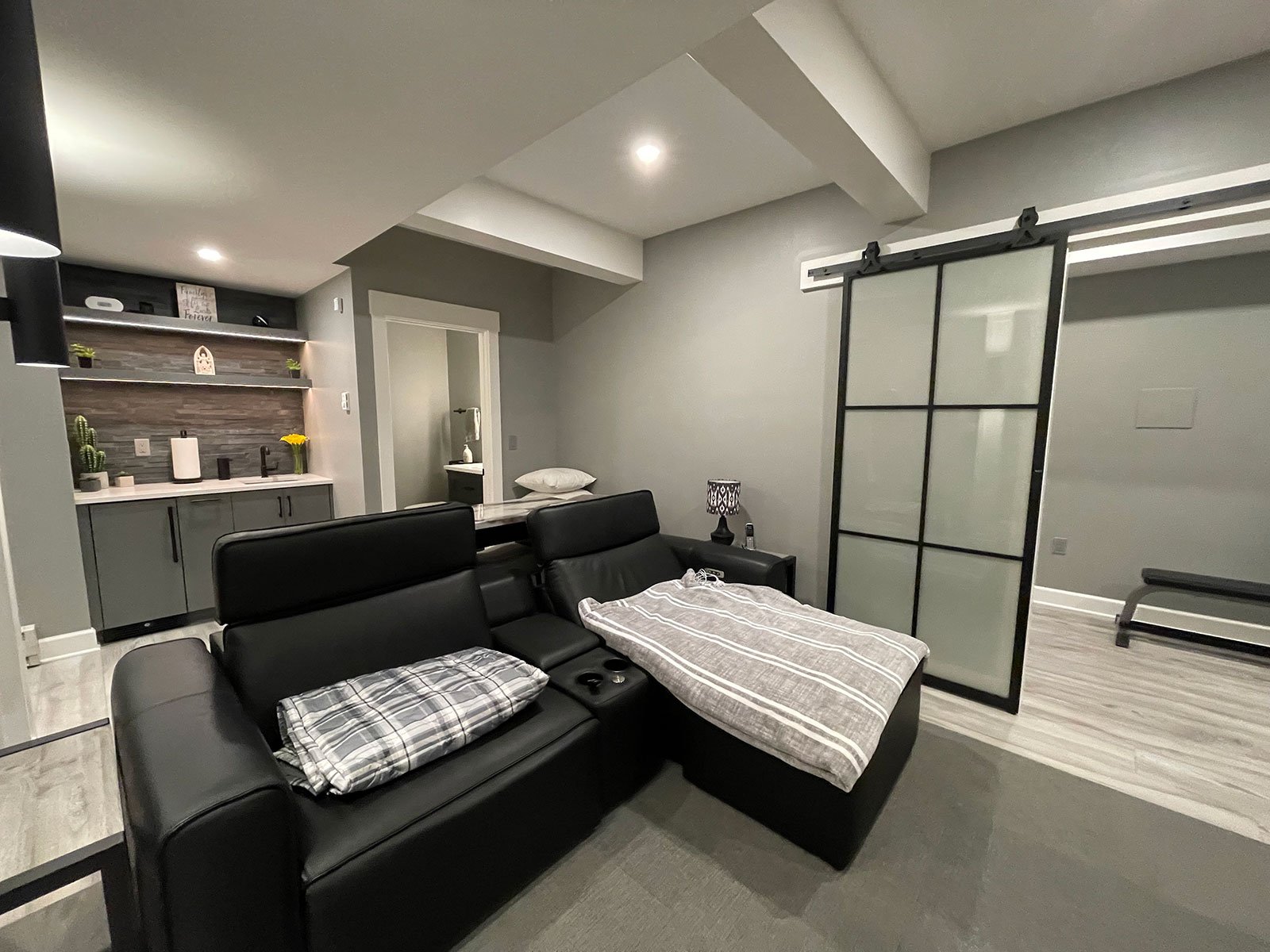
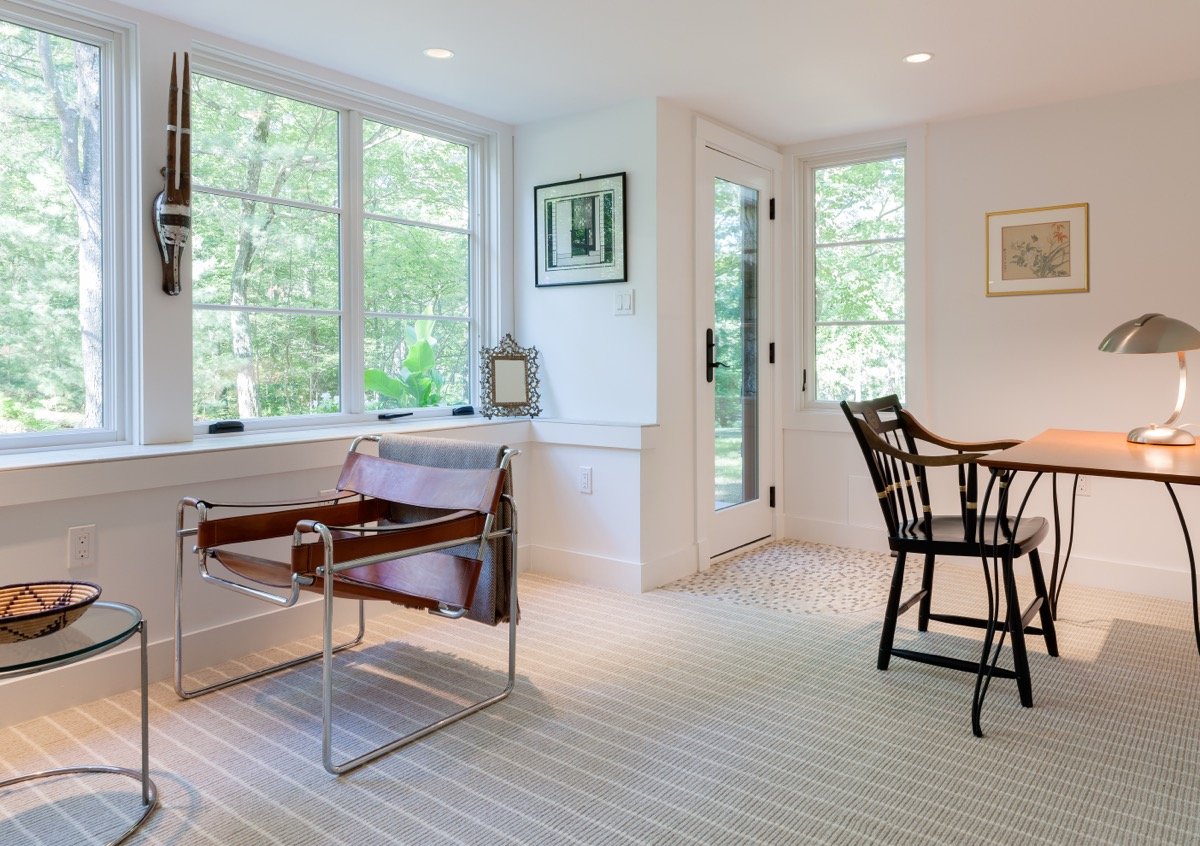
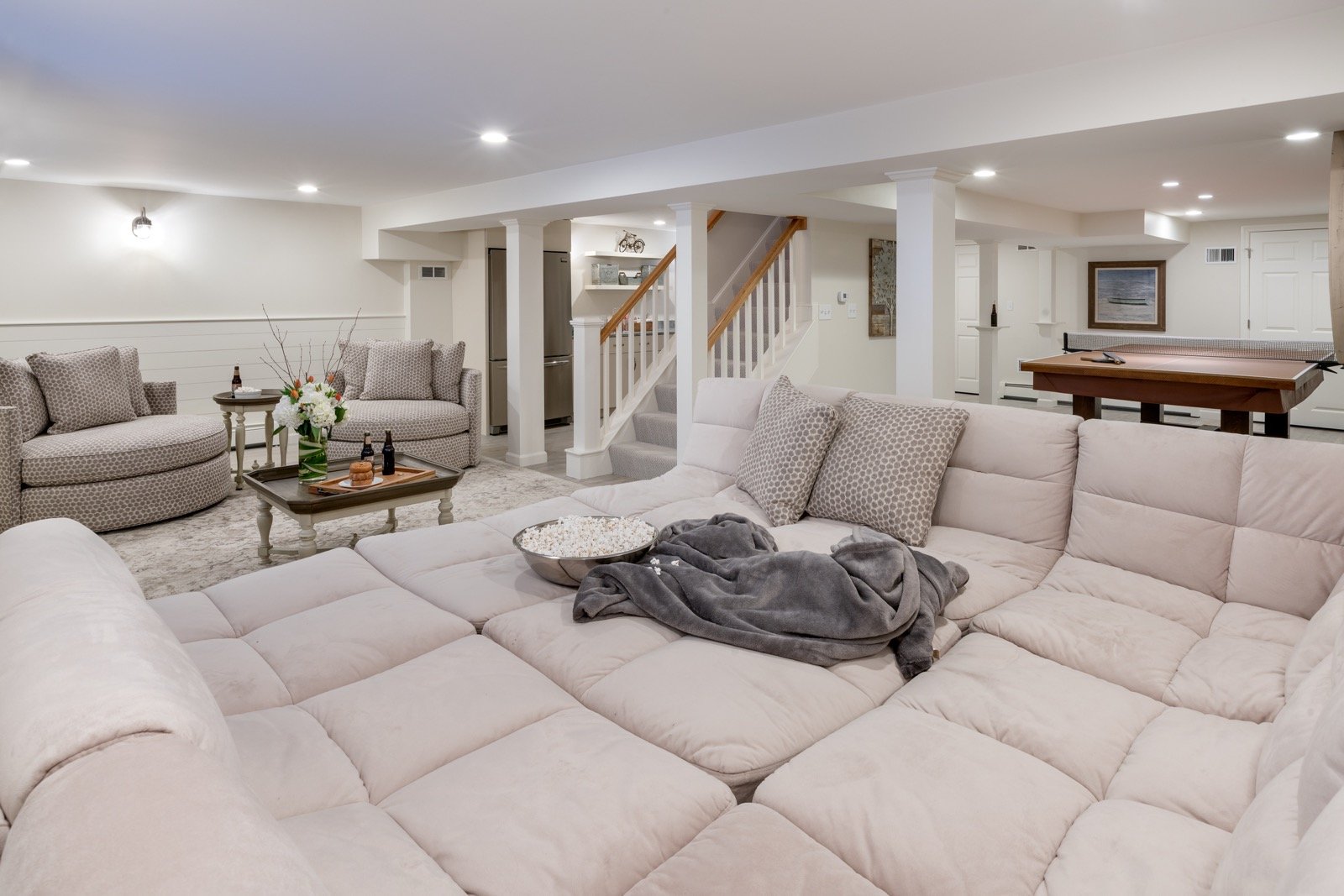
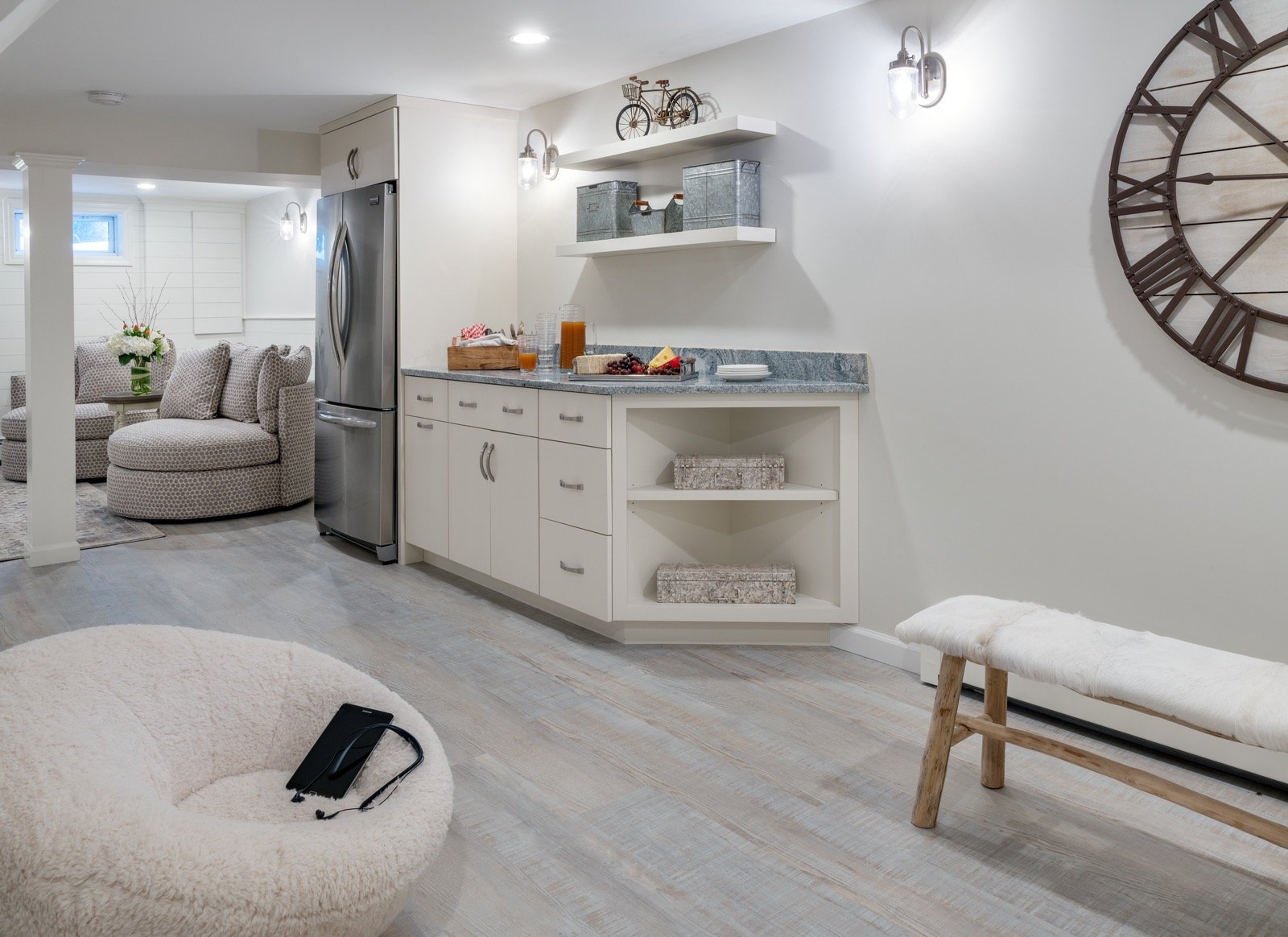
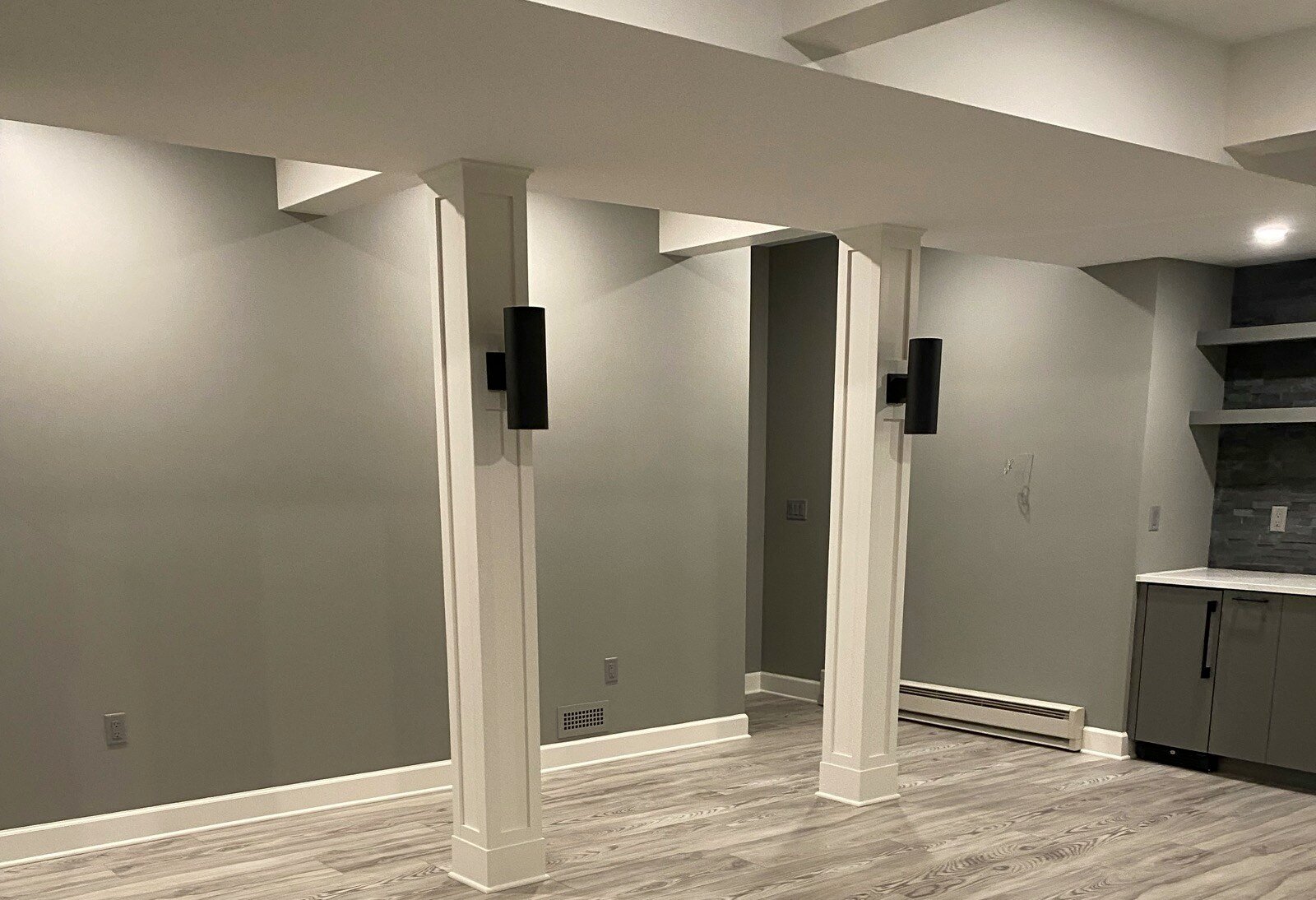
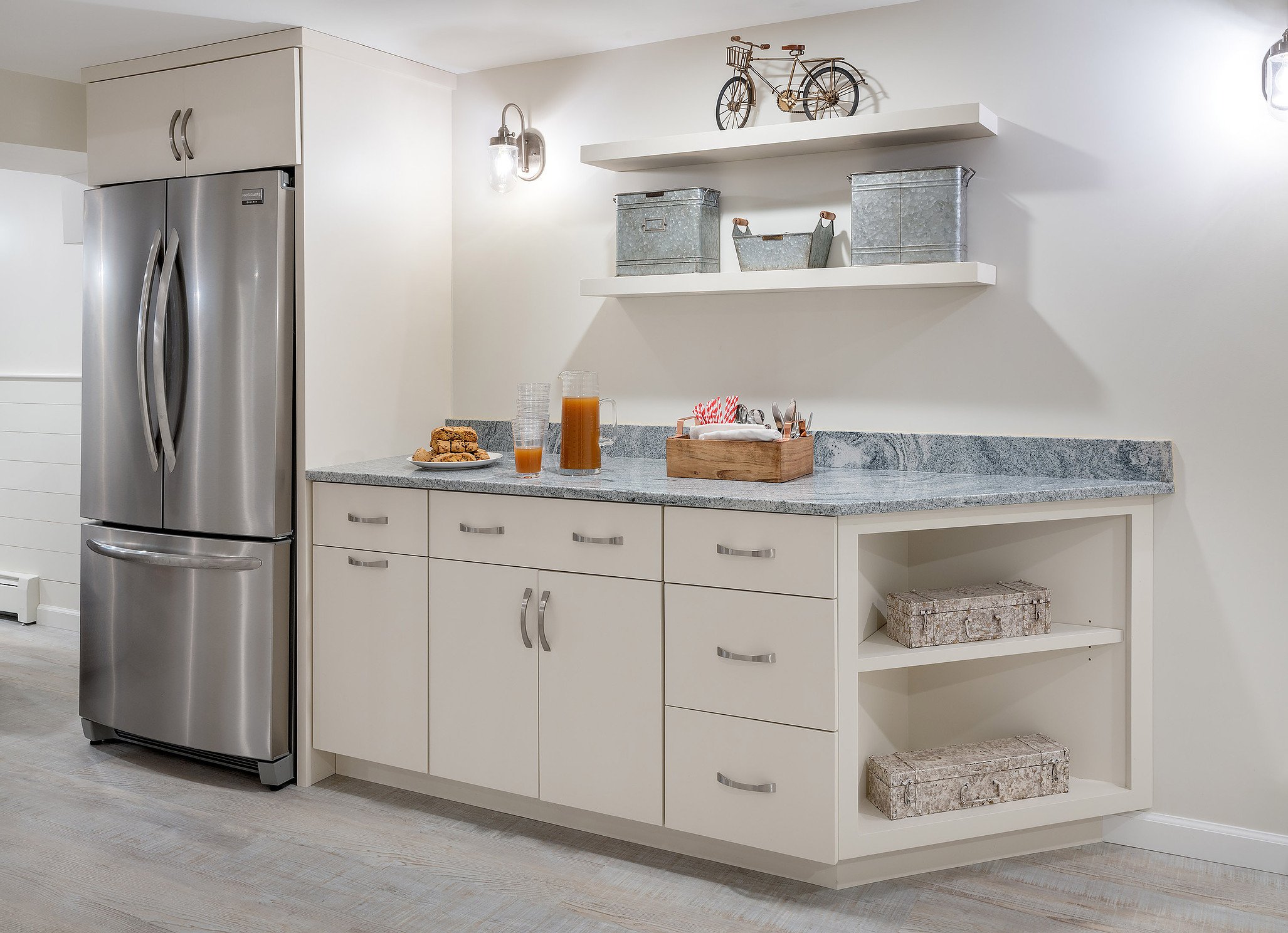
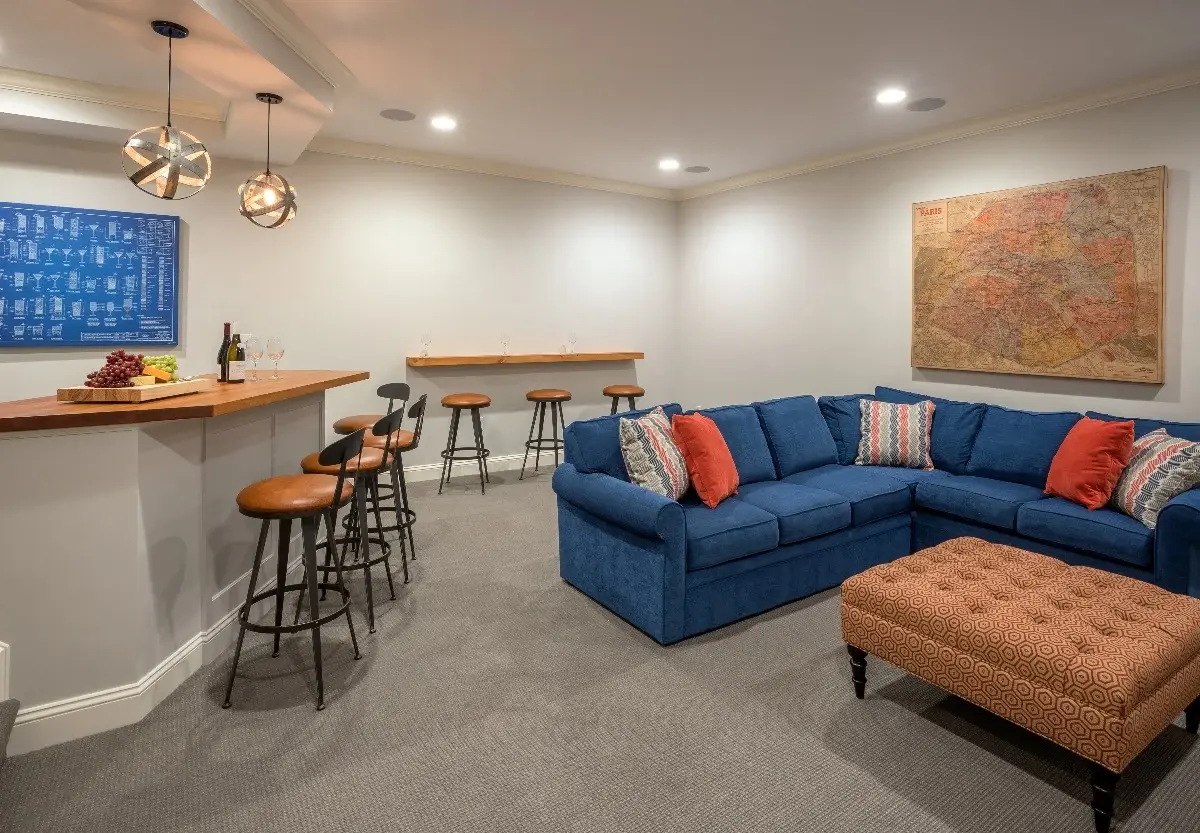
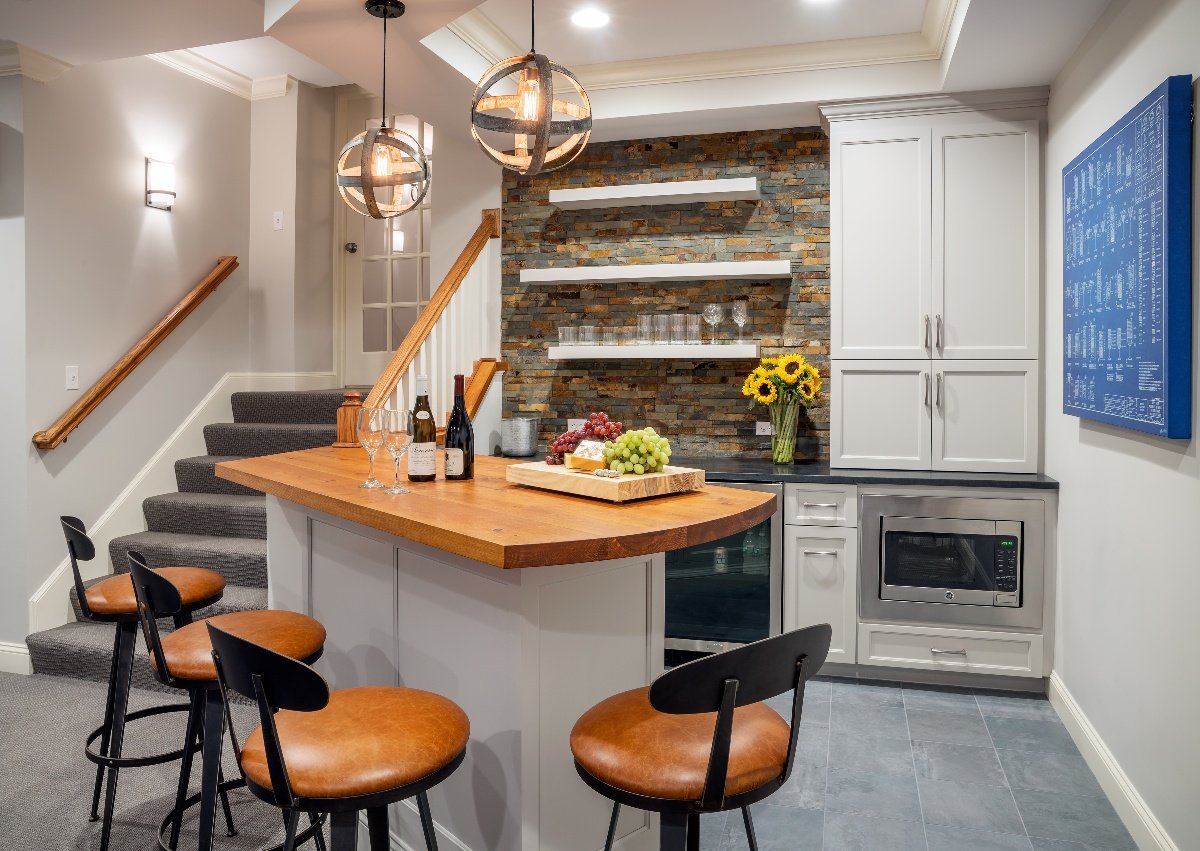
Leave a comment